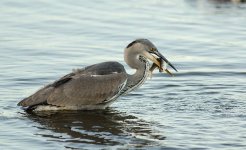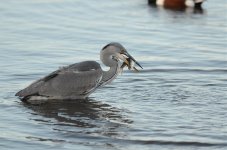woodsc
Active member
Hi
I recently purchased a Nikon D7000 and have subsequently started bird photography. This week I have purchased a Nikon 300mm f2.8 Lens in conjunction with a 1.4 converter (wanted some versatility) so I didn't go for longer focal length lens (500mm) ~ I'm also broke!!
My question to those experts using this cameras for bird photography is what level can you push the ISO levels to without showing too much noise.
I tested this new lens yesterday in poor lighting conditions and subsequently was struggling with shutter speeds.
Went into a hide and there was a Bittern ~ 20ft away ~ had to shoot quickly as a result I only shot at 1/250th and the result was disappointing (I'll post one on the forum for you guys to have a look at)
As a novice I'm looking for any advice relating to best practices in taking birds ~ talking to a couple of guys yesterday they kindly told me where possible to shot on Aperture Priority to achieve best shutter speed and to wind the ISO up slightly
Any advice would be appreciated ~ Thank You
Regards ..Colin
I recently purchased a Nikon D7000 and have subsequently started bird photography. This week I have purchased a Nikon 300mm f2.8 Lens in conjunction with a 1.4 converter (wanted some versatility) so I didn't go for longer focal length lens (500mm) ~ I'm also broke!!
My question to those experts using this cameras for bird photography is what level can you push the ISO levels to without showing too much noise.
I tested this new lens yesterday in poor lighting conditions and subsequently was struggling with shutter speeds.
Went into a hide and there was a Bittern ~ 20ft away ~ had to shoot quickly as a result I only shot at 1/250th and the result was disappointing (I'll post one on the forum for you guys to have a look at)
As a novice I'm looking for any advice relating to best practices in taking birds ~ talking to a couple of guys yesterday they kindly told me where possible to shot on Aperture Priority to achieve best shutter speed and to wind the ISO up slightly
Any advice would be appreciated ~ Thank You
Regards ..Colin





